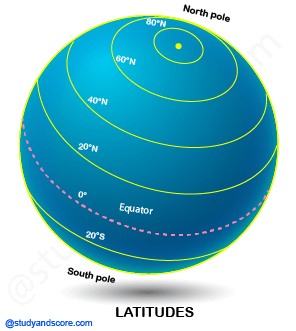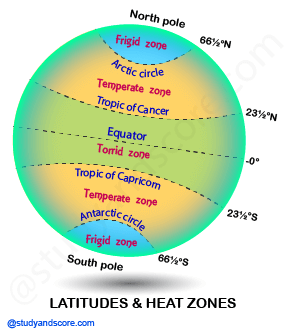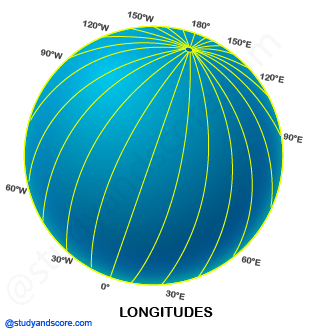


1. Tropic of Cancer (23½° N) in the Northern Hemisphere
2. Tropic of Capricorn (23½° S) in the Southern Hemisphere
3. Arctic Circle at 66½° north of the equator
4. Antarctic Circle at 66½° south of the equator


Link to Solutions on this topic
Hope you have liked this post.
Please share it with your friends through below links.
All the very best from Team Studyandscore
“Study well, Score more…”
- Share with your friends! -
Login to post your comment here...
- or with social Account -